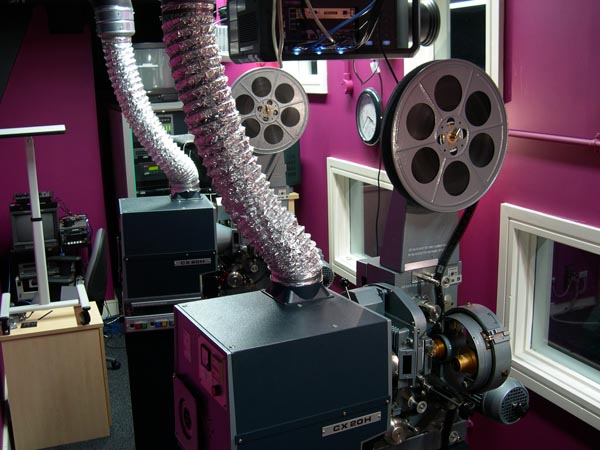A Night at the Movies: How to predict a Door-buster
“We can sell people popcorn and snacks, but how do we get them in the door?”
-Theater Owners & Operators
At the time of writing this, COVID-19 is still present in the United States but the vaccine rollout has led to policy makers allowing the economy to slowly reopen. One of my favorite industries is coming back online and I couldn’t be more excited; I’m looking at you movie theaters.
There has always been something exciting about going to a theater to watch a movie. The whole process from buying a ticket, getting the popcorn, drinks and snacks, the anticipation when rounding the corner in the dark hallway, a lighted walkway guiding your path, revealing the vast seating available (or not). The thrill of seeing trailers for new movies, the anticipation when the lights get low and sound kicks into full surround quality; it’s almost magical.
Because of this love of movie theaters I wanted to ensure my local one remained successful. I asked to partner with them to see if data could help increase their sales.
Setting the Scene
Brothers owned and operated the theater. Together they partnered running the business. One handled the day-to-day operation while the other handled the accounting, finance, relationships, legal, etc.
Together they owned the only 2 theaters in town. One was the traditional cinema with 5 screens. The other was the local drive-in movie theater; in case you’re wondering, it’s a small town.
The brothers also had a small social media presence, utilizing a single Facebook page for each theater. Because of their busy schedule the page was only used to post showtimes for each movie, each week. Along with each post, they would include the link to IMDB for the movie they were playing.
A quick note about movie theaters and their balance sheet
Theaters pay to have movies shown on their screens. Back when reels were used, studios would rent out reels of their films to the theaters and after a certain amount of time the theaters had to send them back. Now, with the advent of digital and higher quality imaging, cartridges or drives are sent to each theater. Each cartridge has a timer embedded in it which only allows the movie to be played until the timer runs out. It is then sent back to the studio.


These movies cost a pretty penny so theaters have to be really judicious about what gets played on their screens. Since the expense is at the beginning, before any bodies come through the doors, owners have to then try and get as many people as possible into the theater to recoup their cost.
Thus the reason you have so many showings of a movie during the day is because they are trying to get the max amount of people in seats to see the movie. However, the margins between movie rental-costs and movie tickets are so slim, theaters are lucky to even recoup the rental cost.
The brothers told me a story about this. When a neighboring town’s theater rented a first-run movie, the opening night they were sold-out for all of their showings for all of their screens. The theater charred $16.50 per seat to see the show and how much did it cost them to play it?
$16.25 per seat.
If margins are so low on ticket sales, where does a majority of their revenue come from then? Food sales. All that marked up popcorn with melted liquid gold drizzled on top, over-sized cups of soda you drank before the movie started, and king-size candy is where theaters make their money. So if you love your local theater and want to see it prosper, think twice about smuggling in your food and drink and buy that jumbo-bucket of popcorn with big-gulp drink.

It makes the movie better anyway.
(End soapbox)
The brothers felt confident they could sell treats once customers were there. The hard part for them was getting bodies in the door.
Rising Action
With the goal in mind to figure out how to increase ticket sales (a ticket = a body in the door) I gathered the necessary info.
First, they gave me an export of their sales data.
Second, I was given access their Facebook page so I could see how people were interacting with their posts.
Third, I then went to IMDB for more information. This site is literally a database about movies (Internet Movie DataBase) and has tons of stats about almost every movie: user rating, number of users who rated, budget, genre, actors/directors/producers/musicians, MPAA rating, box office sales, and more.
I gathered all this data together and combined it to look at contributing factors to their weekly sales. With this configuration, each attribute becomes a description of sales. Attributes such as, likes, comments, and shares from Facebook, movie budget, movie global-sales, number of times a movie is shown on the screens, and more, help us learn about why the sales for the specified week are the way they are.
To understand and predict sales I decided to use a method called regression analysis.
After analyzing all the we can get 2 key things from our analysis:
1) What key attributes help us predict sales
2) An equation which will help us predict future sales
Key Attributes
First, we learned the key attributes. Out of all the attributes we assembled the top ones were a) IMDB’s: Movie Budget and b) Facebook’s ‘Like’ count.
Movie Budget

The brothers gave a good perspective of why the movie budget was key. They said the marketing expenses are fairly large in movie production. The larger the budget, the more people know about the movie. The more people know about the movie, the more likely they are going to see it.
Likes

Since Facebook was new territory for them, I explained the probable reasoning for the likes floating to the top. Because of their unique posting strategy – only posting the movie link, and only posting it for movies they are showing in the specified week- the ‘Likes’ took on an affirmation-state. When a person sees the post for a movie, sees that it is playing locally, and ‘Likes’ it, it seems to be their way of telling the world: “Yes, I want to see this movie, and yes I will see it at this theater”.
An equation
Second result from our analysis is an equation. Because we are trying to predict sales, the result of our analysis provided a list of all the attributes and how much they influence our bottom line. See the abbreviated simplified-equation below; the actual equation is a lot longer and comprises all the attributes but this provides a good visual:
“Because of their unique posting strategy… the ‘Likes’ took on an affirmation-state.”
50 + 0.00003movieBudget + 0.5Likes = Ticket Sales
What the above equation tells us is the brothers typically get $50 tickets sold each week. Then, if an additional dollar is spent in the movie budget they would get an additional $0.00003. This is so low because movie budgets are usually so high, in the millions. The production has to spend a lot of money on advertising just so people in this town can see an ad for it and want to go see the movie. So, for every $100,000 spent on the movie budget, an additional 3 tickets will be sold. Finally, for every 2 likes their posts get, they will get another ticket sale.
They can now effectively predict their sales for any week, using the above equation, but can also influence their sales by following the equation as well. If they have a particular movie they want to play, they can see the budget and see how many $100,000’s were spent and see how many sales they are expected to get. If they want to increase their sales, they can play movies which have a large budget, typically the most popular movies with the most advertising.
With Facebook, they have a little more flexibility. They can try and increase traffic to their page and work to bring up the likes for each post. Strategies may vary on the best way to increase this number but a lot of options are available.
Now the equation above isn’t perfect, but it’s a pretty good guess. Over time the above equation will probably change. Another quick analysis can provide a new equation and perhaps even more or different attributes.
Denouement
Using this analysis I was able to take the results to the two brothers. With their busy schedules they had never thought about what influenced sales much less how to influence those factors but were ecstatic to start trying new things to help get bodies in the door.
They also were happy to see their current Facebook strategy was working and wanted to try and improve on it.
Key Takeaways
- Having a goal in mind or a problem you know needs to be addressed is enough for data analysis to start a discovery process.
- Data can guide you to insights and together with your unique-business-knowledge you can find the answer quicker, saving time and money.
- Don’t smuggle food, buy it from the theater. 🙂

What factors contribute to your sales?
Contact me or set up a 15min. call
Attributes
33mm Camera– By LDGE at English Wikipedia, CC BY 3.0, https://commons.wikimedia.org/w/index.php?curid=31333683
Digital Hard Drive– Sarah Jean Condon, The Citizen
Budgets– Icons made by Smashicons from www.flaticon.com
Like– Icons made by Pixel perfect from www.flaticon.com


